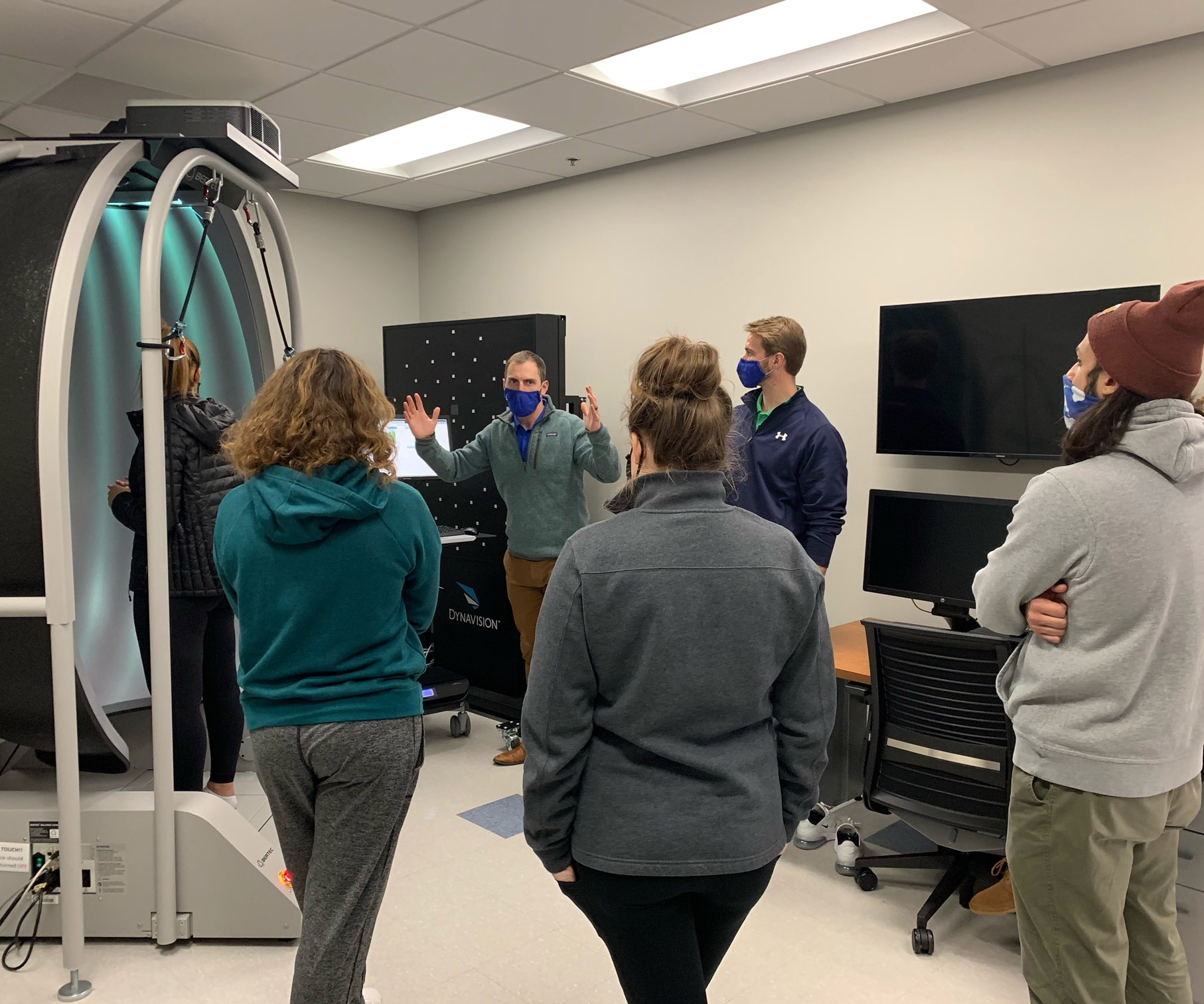Welcome to the ‘real, clinical environment’
First cohort of professional AT program is now applying their knowledge in the classroom
By Ryan Clark
CHS Communications Director
Welcome to Clinical Integration 1: Lower Extremity Assessment and Management.
It’s a class in the College of Health Sciences’ first Athletic Training cohort — but it’s not just any class. For the first time, the cohort of Athletic Training students are able to put into practice everything they’ve learned. And they can practice it all on a real person.

It’s just one of the amazing experiences in the program, which has weathered the COVID-19 protocols of the past year and has moved back to offering in-person, simulation classes.
Like Clinical Integration 1.
“We’re trying to take what they've learned from all the typical didactic courses and labs they've taken, and trying to overlay some of the nuances of dealing with those things in a real clinical environment,” says Nick Heebner, PhD, ATC. “We try to give them more case scenarios that are a little bit more complex, and have a little bit more context around it, instead of just your typical lateral ankle sprain.
“And then, they go about the textbook way of evaluating how we want them to apply those standard skills,” he continues. “Then you have to understand how you deal with that patient when they're a week out, when maybe the swelling isn't recovering as well as it should, and what are the other tools in the toolbox to help deal with that.”
Nick Heebner, PhD, ATC, joined the University of Kentucky in August 2015 as an Assistant Professor in the Department of Athletic Training and Clinical Nutrition. He is currently the Executive Associate Director of the University of Kentucky Sports Medicine Research Institute, and teaches this course with Phillip Gribble, Ph.D., ATC, FNATA. Gribble is a Professor and the Chair of the Department of Athletic Training and Clinical Nutrition, as well as the Program Director for the CAATE-accredited post-professional master's program in Athletic Training.
“The students have seen all the information in a textbook, and they’ve had a chance to practice — now let's expand beyond that,” Gribble says. “So we give them a lot of case study scenarios challenging them to think about how they would apply their knowledge to physical evaluation skills, like how to recognize when injuries happen, or how to use their hands and their words to learn from the patient.”
Tell me what you're feeling? the students may ask the patient.
Or, Tell me what you experienced?
In this class the students can also get an injury history and then follow that up by using their hands, and their tactile sensations, to look for tenderness, deviations, or swelling. Or they can move a body part to see if a ligament feels unstable.
They could also try to assess the integrity of a muscle or determine if something is a spasm. They can work with range of motion and strength assessments to arrive at a physical evaluation.
In essence, they can practice important skills as they strive to become athletic trainers.
“I know learning from books and PowerPoints is vital, but I always believe learning when you’re out of your seat is more fun,” Heebner says.
It’s been a year since those in the AT program had to completely restructure their classes. In the summer of 2020, students were able to take classes virtually, which had them learning how to, among other things, record their patients over Zoom.
Then, in the fall, students came back to class, socially distanced, to learn theories and techniqes from textbooks.
Now, things are getting closer to normal, something that is also rewarding for Heebner and Gribble.
“It's definitely exciting to get back and be able to interact with the students in person and teach again,” Heebner says.
“The other thing is, these students got thrust into a brand new program and they couldn't even meet each other, or the faculty — they're all sitting at home or wherever they might be,” says Gribble. “That’s a weird thing for most traditional athletic training learning. Normally, you go through all this with your classmates and you bond, you learn to be with a team.
“You know, I give them a lot of credit for sticking with this,” he continues. “And I think this group has responded really, really well.”
___________________________________________________________
March is National Athletic Training Month
National Athletic Training Month is held every March in order to spread awareness about the important work of athletic trainers. The College of Health Sciences will be recognizing and honoring our Athletic Training program with profiles and stories throughout this month.
Interested in applying to UK’s Athletic Training program? Visit us here.